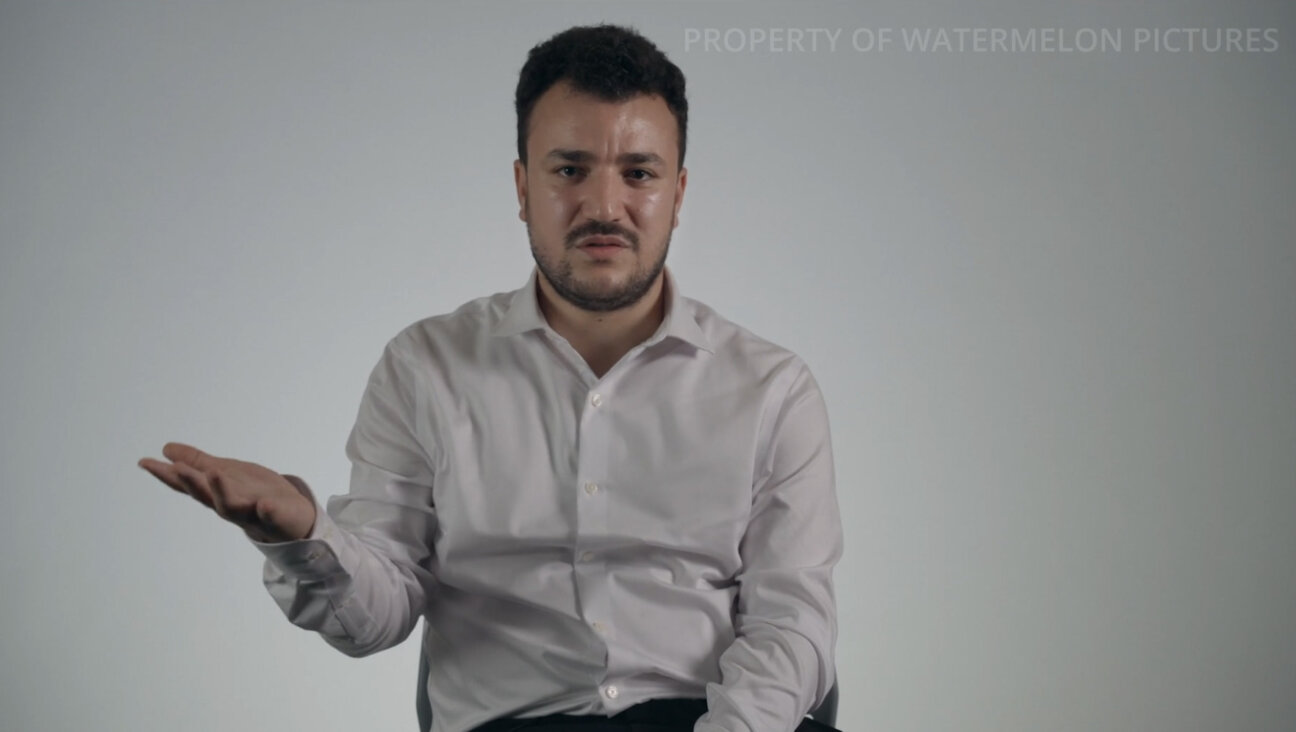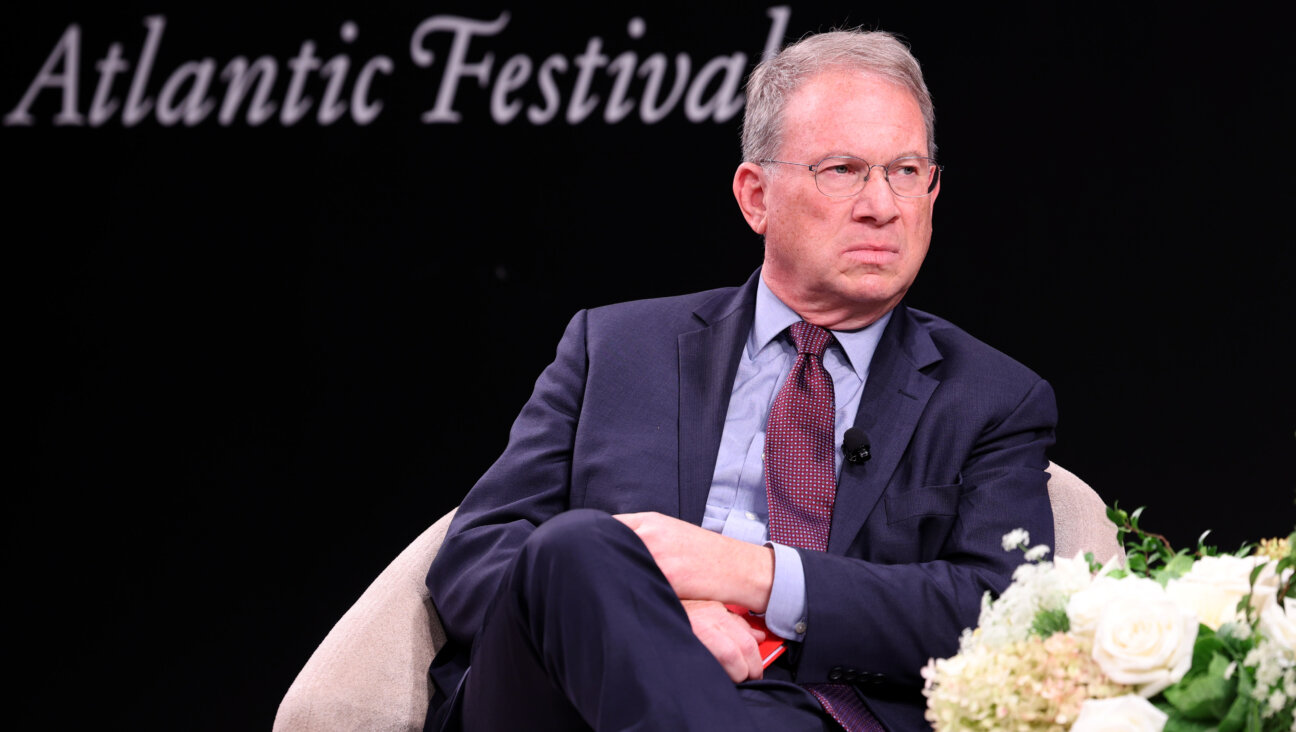Poles Open Probe Into Jewish Role In Killings
Poland’s official National Institute of Remembrance, created to investigate historic crimes of the Nazi and communist eras, is currently investigating allegations that Jewish partisans participated in a massacre of civilians in Poland in early 1944.
The institute launched the investigation in February 2001 at the request of the Canadian Polish Congress.
Robert Janicki, deputy commissioner for prosecution of crimes against the Polish nation, told the Forward in a written statement that the institute was interviewing witnesses, including both victims and perpetrators, and was gathering archival material from several countries, but that no date had been set for the conclusion of the investigation.
Still, the institute has issued some preliminary reports, which contain allegations that some 50 to 60 Jewish partisans were part of a 120-strong Soviet partisan unit that attacked the village of Koniuchy on January 29, 1944. At least 35 civilians were killed, and the village, now located in Lithuania and called Kaniuakai, was burned to the ground, according to the reports.
The investigation, which has not been reported in the United States and was unknown to a series of scholars interviewed for this article, is creating unease among Jews because of its possible political motives.
“It is very convenient for the Canadian Polish Congress to raise this issue instead of providing explanations about pogroms of Poles against Jews during and after the war,” said Hebrew University historian Dov Levin, who was a member of one of the Jewish partisan units operating under Soviet command in that region and has written several books on the issue.
Calls to the Canadian Polish Congress seeking comment were not returned.
Although relations between Poland and Israel have improved over the past decade, the affair is likely to fuel further acrimony in Polish-Jewish relations, which have been soured in recent years by disputes over the 1941 massacre of Jews by Poles in the village of Jedwabne, which some Poles blamed on German soldiers. The tensions spilled over into this country when a Polish-American leader made antisemitic remarks on the issue last year.
While some observers expressed concerns about the intentions of the Canadian group, they said the Polish remembrance institute was a solid and reliable institution. It gained credibility by conducting a thorough review of the events in Jedwabne, confirming that Poles played a central role in the massacre.
The Canadian Polish Congress has been pushing for years for an investigation of the Koniuchy killings, on which it published a book in 1998. The efforts gained new impetus after a Polish newspaper reported on the incidents in 2001, quoting survivors and citing new archival material confirming that a mass killing had taken place.
The fighting at Koniuchy is described in several Jewish accounts of partisans’ battles, including “The Avengers,” a book by Rich Cohen, published in 2000. The Jewish partisan units were part of a brigade commanded by the former Vilna ghetto fighter Abba Kovner, who went on to become a leading Israeli poet.
In its letter to the institute calling for an investigation, the Canadian group cited several accounts by Jewish partisans to back up its allegations. The letter highlighted the role played by the Jewish partisan groups and repeated the highest death estimates, while downplaying the reported pro-Nazi attitude of the villagers. It also downplayed contemporary accounts signaling the nearby presence of German and pro-German police forces or fortifications around the village.
The Canadian group has called on the Polish government to bring the perpetrators to justice and to strip the reputed commander of the partisan unit, Genrikas Zimanas, of Poland’s highest military honor.
Anthony Polonsky, a historian at Brandeis University, said that under the circumstances, Poland’s remembrance institute had no choice but to open an investigation.
The institute is now trying to reconstruct the actual events that took place in Koniuchy, a small village at the Polish-Lithuanian-Belarus border.
Severin Hochberg, a historian with the United States Holocaust Memorial Museum, said material he had seen suggested that civilians were indeed killed by partisans, a view endorsed by several experts interviewed for this article.
“At the time, the Soviets were on the offensive and the Jews fought with them, so I believe something serious took place,” he said. ”But there is still a lot of research to be done.”
One of the issues needed to be settled is the number of deaths, which the Canadian Polish Congress puts around 300. Most accounts hover between 30 and 40.
A spokesman for the institute, Andrzej Arseniuk, told the Forward the institute was basing its research on the lower estimate.
An examination of preliminary findings summed up in several interim reports confirms that the institute is basing its research on the assumption that 36 to 50 people were killed.
In one report, dated September 9, 2002, the institute’s regional office in Lodz said the villagers had organized a self-defense group to prevent Soviet partisans from looting, prompting the partisan units to attack the village in the early hours of January 29, 1944. The report cites witnesses saying that the most numerous group of partisans were “of Jewish nationality” and claims that there were some 50 Jews amid the 100 to 120 attackers.
In his letter to the Forward, the prosecutor cites a secret report from the German Wermacht command in Riga a week after the incidents saying that a group of Russians and Jews had killed 36 people and that the village was burned to the ground.
A similar death tally was found in a Lithuanian pro-German police report, according to Sarunas Lieckis, a Lithuanian researcher. Soviet reports mention the event without giving body counts but emphasize that the self-defense units of the village were harassing the partisans, according to Lieckis.
Professor Levin of Hebrew University, who was a member of the “Death to the Occupants” partisan unit, said Koniuchy was an “event.”
He refused to discuss the events further on the phone, adding that there were probably mischievous designs behind the initiative to publicize the events.
A key issue facing Polish researchers will be to determine the degree of autonomy of the Jewish units in the Soviet partisan hierarchy. The units were incorporated within the Soviet command-and-control chain at the time, according to historians Hochberg of the Holocaust Museum in Washington and Israel Gutman of the Yad Vashem museum in Jerusalem.
In its September 2002 interim report, the remembrance institute concurred, saying that the partisan units were under the direct command of the central partisan command in Moscow. That could indicate that singling out the Jewish units is unlikely since they were part of the partisan infrastructure.
However, Hochberg added that one could possibly speak of a “semiautonomous” situation in which the Jewish units had to fall in line with the Communist leadership while maintaining some leeway in deciding their participation in specific operations.
The remembrance institute is also investigating another killing in the village of Naliboki in May 1943.
The Forward is free to read, but it isn’t free to produce

I hope you appreciated this article. Before you go, I’d like to ask you to please support the Forward.
At a time when other newsrooms are closing or cutting back, the Forward has removed its paywall and invested additional resources to report on the ground from Israel and around the U.S. on the impact of the war, rising antisemitism and polarized discourse.
Readers like you make it all possible. We’ve started our Passover Fundraising Drive, and we need 1,800 readers like you to step up to support the Forward by April 21. Members of the Forward board are even matching the first 1,000 gifts, up to $70,000.
This is a great time to support independent Jewish journalism, because every dollar goes twice as far.
— Rachel Fishman Feddersen, Publisher and CEO
2X match on all Passover gifts!
Most Popular
- 1

Film & TV What Gal Gadot has said about the Israeli-Palestinian conflict
- 2

News A Jewish Republican and Muslim Democrat are suddenly in a tight race for a special seat in Congress
- 3
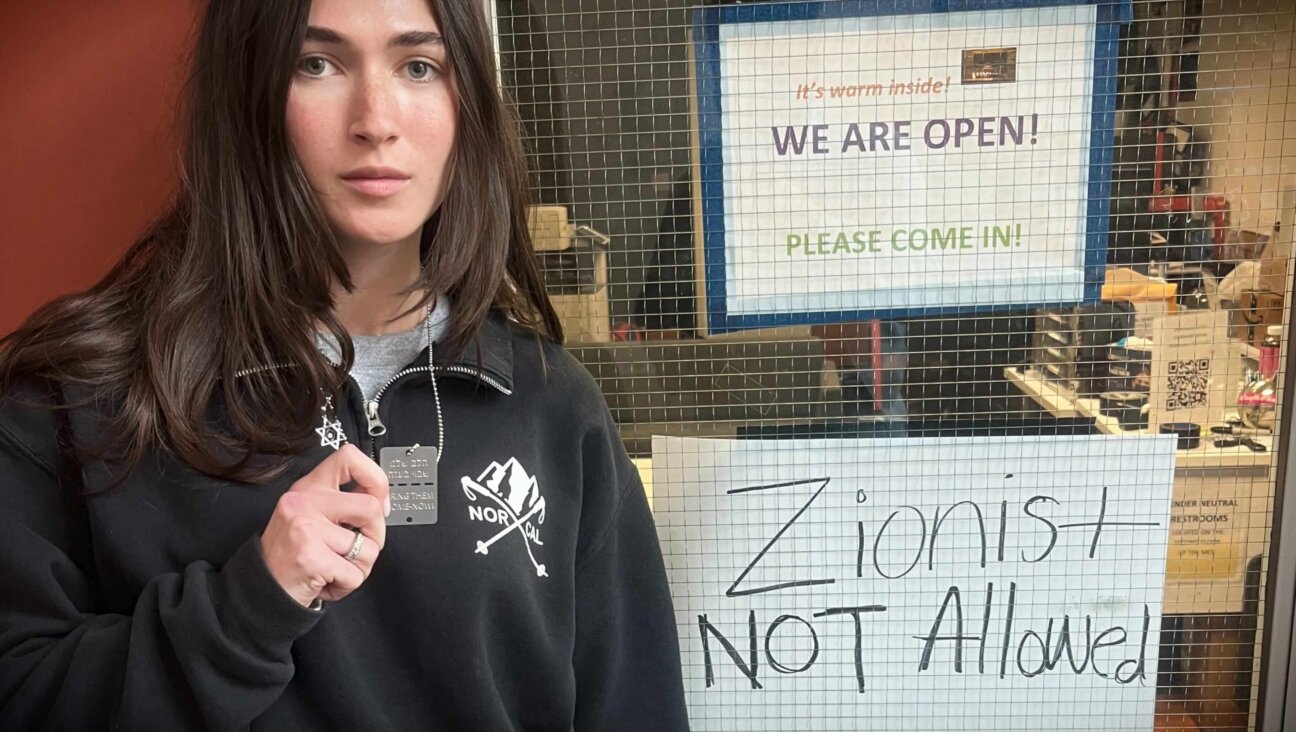
Opinion Is this new documentary giving voice to American Jewish anguish — or simply stoking fear?
- 4
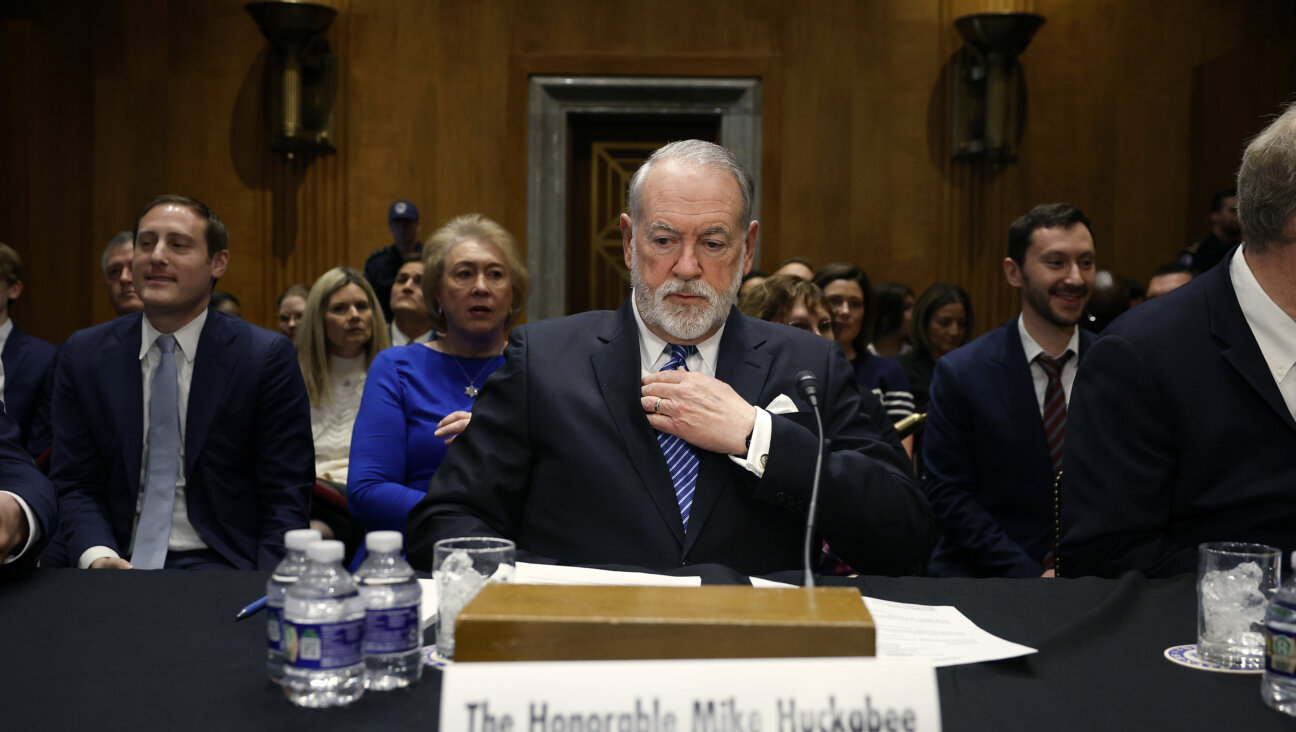
Opinion Mike Huckabee said there’s ‘no such thing as a Palestinian.’ It’s worth thinking about what that means
In Case You Missed It
-
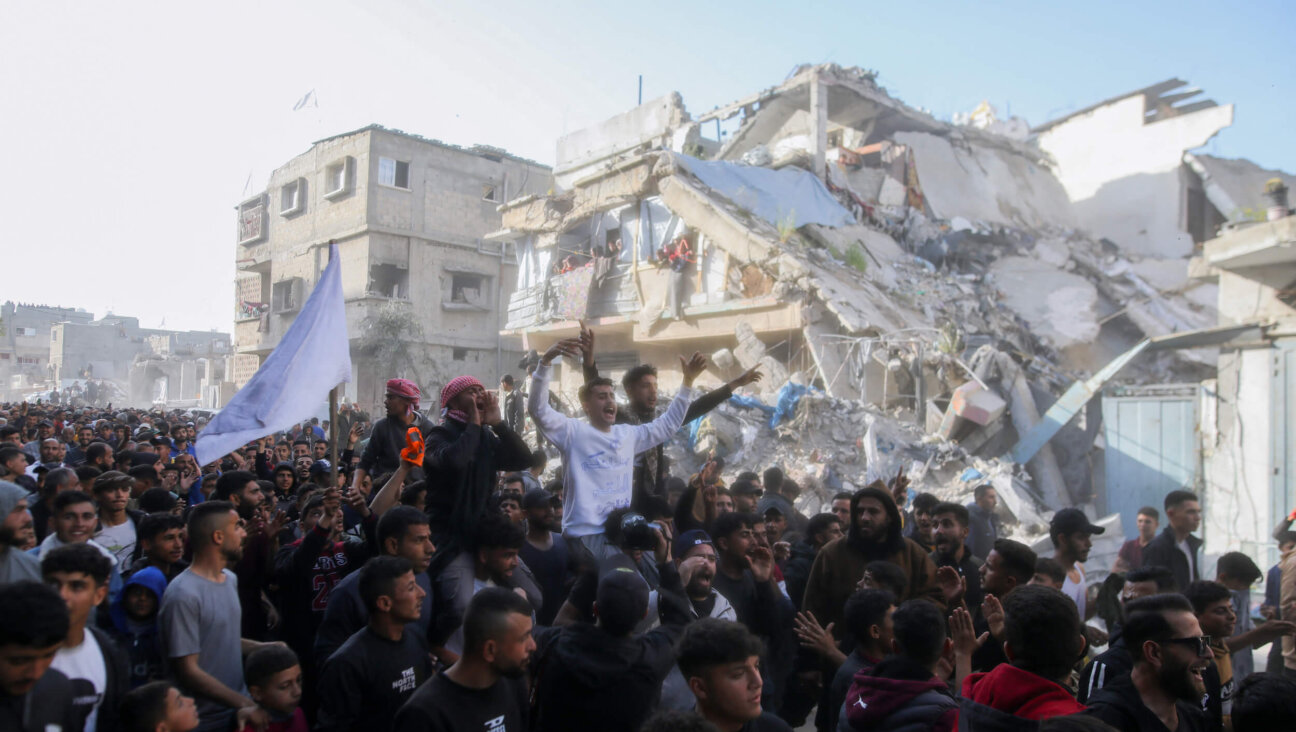
Opinion Think every Palestinian in Gaza is Hamas? This week’s protests prove you’re wrong
-

Opinion A Palestinian Oscar-winner’s arrest shocked the world. For these Jewish activists, it was terrifyingly normal
-

Opinion In the Trump administration and Israel, a grotesque display of virility coupled with a loss of humanity
-

Fast Forward Cornell’s new Jewish president says he is ‘very comfortable with where Cornell is currently’
-
Shop the Forward Store
100% of profits support our journalism
Republish This Story
Please read before republishing
We’re happy to make this story available to republish for free, unless it originated with JTA, Haaretz or another publication (as indicated on the article) and as long as you follow our guidelines.
You must comply with the following:
- Credit the Forward
- Retain our pixel
- Preserve our canonical link in Google search
- Add a noindex tag in Google search
See our full guidelines for more information, and this guide for detail about canonical URLs.
To republish, copy the HTML by clicking on the yellow button to the right; it includes our tracking pixel, all paragraph styles and hyperlinks, the author byline and credit to the Forward. It does not include images; to avoid copyright violations, you must add them manually, following our guidelines. Please email us at [email protected], subject line “republish,” with any questions or to let us know what stories you’re picking up.







